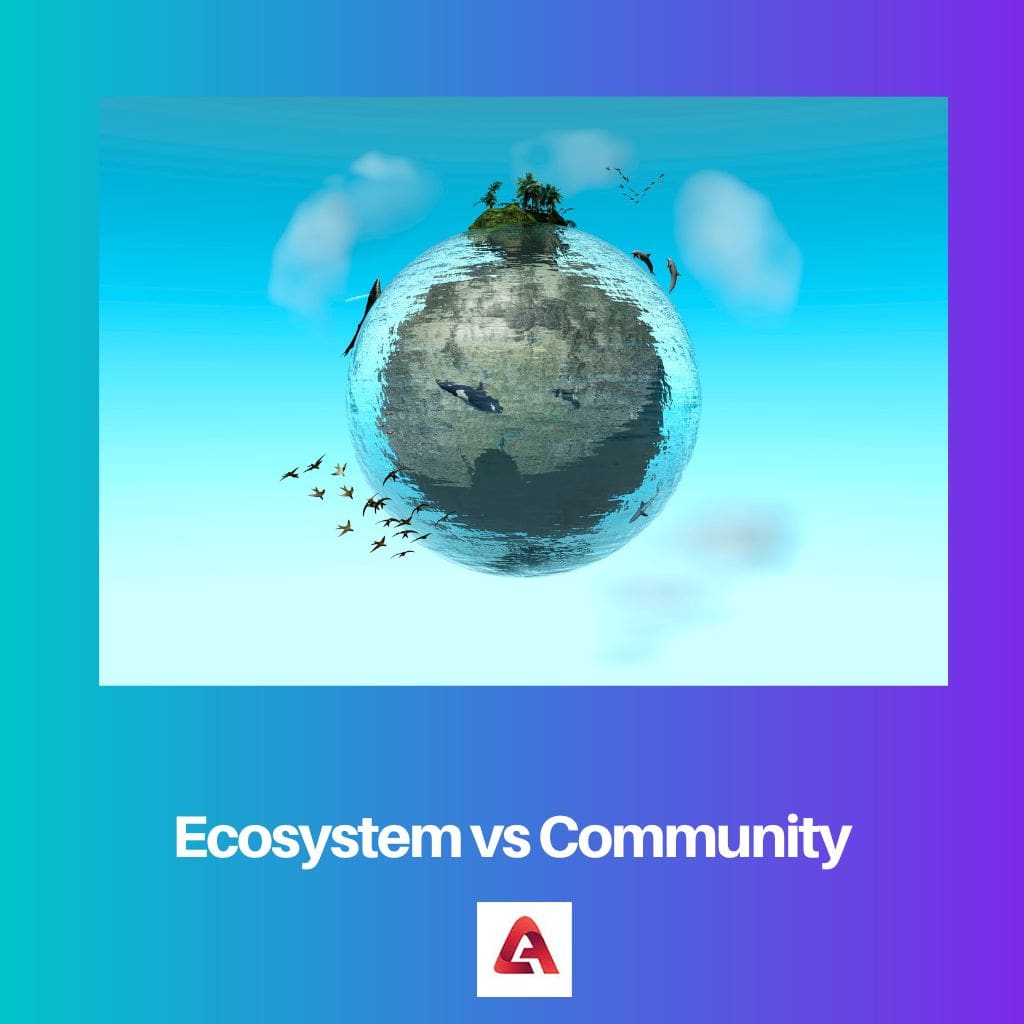Every living thing around us cumulatively is known as an Ecosystem. Well, this was how our teachers taught us at our schools.
In other words, if you want to know what an ecosystem is, you can say: an ecosystem is a community of living things in conjunction with the non-living things of our environment, which are interrelated.
A community means a group having things in common. Say, suppose the Muslims are a different community. The Muslim community is recognized for its religious norm.
Similarly, a community is formed when groups of people have the same values, customs, or religion.
Key Takeaways
- An ecosystem is a collection of living and non-living things that interact with each other in a specific environment.
- A community is a group of people who share common characteristics or interests and interact with each other in a social context.
- While an ecosystem can contain communities of living organisms, a community does not necessarily need to be a part of an ecosystem.
Ecosystem vs Community
An ecosystem refers to a particular environment’s biotic and abiotic components, including living organisms, their interactions, and their physical surroundings. A community refers to a group, specific group of interacting species that inhabit a particular ecosystem.

Comparison Table
| Parameters of Comparison | Ecosystem | Community |
|---|---|---|
| Definition | An ecosystem consists of all living and non-living things in a particular environment interacting. | A community is a group of living things or organisms living in a particular geographical area with common norms. |
| Examples | Forests, ponds, grasslands | Birds living in the same area, animals, plants |
| Consists of | An ecosystem includes both living and non-living factors in an area. | A community only consists of biotic factors in an area of a region. |
| Changes in the Environmental factors | Changes do not happen with any affecting conditions | Changes may happen due to changes in environmental factors. |
| Broader | An ecosystem consists of a broader level than a community | A community only consists of the biotic factors in the ecosystem |
What is an Ecosystem?
When we hear the word, the first thing that comes to mind is living and non-living things. Similarly, the term refers to biotic and abiotic factors in a particular regional area.
Well, in an ecosystem, the biotic factors consist of all the living beings like bacteria and other small microorganisms to the big-sized living things, interacting with non-living things like rivers, sun, mountains, air, and many others.
The interaction between living and non-living things fulfils the environment’s needs. The food chain is an example of a requirement in the environment.
However, most ecosystems consume energy directly from the sun itself. Photosynthesis occurs when plants trap the radiation of the sunlight (also known as autotrophs).
Heterotrophs depend on autotrophs for their food; therefore, they are called primary or secondary consumers. Autotrophs are called primary producers in the ecosystem.
They have the most contribution to the survival of other organisms.
When autotrophs and heterotrophs are dead, then it brings in the decomposers. The decomposers, like earthworms, millipedes, and mushrooms, use organic matter as energy.
After the first requirement is complete, the second requirement comes into effect.
The second requirement consists of nutrient recycling in an ecosystem. Some recycling examples are the carbon cycle, water cycle, nitrogen cycle and many more.
These cycles ensure that the supply of different nutrition n an ecosystem is continuous.

What is Community?
A community is also called a group of living organisms living together with common characteristics. A community is formed to support each other for the survival of each other.
Therefore, we can define a community as the interactions between living things (biotic components) in a particular geographical area.
Another name for a community is ‘biological community’ because, in a community, the biotic factors interact with each other. These interactions are also categorised into mutualism, commensalism, and predation.
When both parties benefit from each other is known as ‘Mutualism’, whereas when commensalism occurs, only one party benefits, but the other party is not harmed.
In the third situation, one of the parties benefits while the other party is harmed, thus known as ‘parasitism’.
The organism that comes under a community comes under an ecosystem. Thus, the biological community is also involved in the food chain. These organisms contribute to the recycling process as well.

Main Differences Between Ecosystem and Community
- An ecosystem and a community are ecological terms contributing to the ecosystem’s food chain and recycling process. Ecosystem and community describe the distribution of species in a geographical region.
- An ecosystem is the interaction between living and non-living components, whereas a community, on the other hand, is the interaction between biotic components only.
- Some examples of an ecosystem are forests, ponds, coral reefs, deserts, rainforests, and many more, whereas examples of a community would be bacteria, earthworms, fungi, mushrooms etc.
- In terms of biology, both ecosystem and community are crucial and play a vital role in the smooth flow of energy and recycling of nutrients in our environment.
- Their size differentiates an ecosystem and a community. An Ecosystem is wider than a community because a community only comprises biotic factors.
- The ecosystem does not change with the changing factors of our environment, but a community is affected and may change due to environmental changes.





